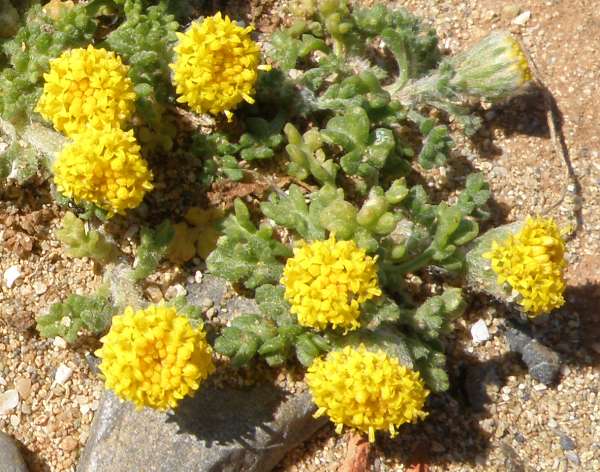Anthemis rigida - Rayless Chamomile
Phylum: Magnoliophyta - Class: Equisetopsida - Order: Asterales - Family: Asteraceae

This low spreading annual plant has sprawling stems that gradually harden and become rigid, hence its scientific specific name rigida. The flowers of Rayless Chamomile are usually yellow, sometimes flushed with pink, and the stems and leaves of the plant are slightly hairy.
Distribution
Found in the eastern Mediterranean region of Europe, Anthemis rigida is particularly common in Crete but is also often found in Greece and Cyprus.

Habitat and Blooming Times
Rayless Chamomile grows in rocky, stony or sandy places, and although occasionally found inland it is most common in coastal areas. This member of the Daisy family, asteraceae (formerly known as the compositae) blooms from February through until May.
The plants shown on this page were photographed on the northern coast of Crete.
Etymology
Anthemis, the genus name, comes from the Greek anthemon, meaning flower, and indicates that this plant produces many flowers. The specific epithet rigida implies, just as it sounds, that the flower stems eventually become hard and rigid.
Please Help Us: If you have found this information interesting and useful, please consider helping to keep First Nature online by making a small donation towards the web hosting and internet costs.
Any donations over and above the essential running costs will help support the conservation work of Plantlife, the Rivers Trust and charitable botanic gardens - as do author royalties and publisher proceeds from books by Pat and Sue.

